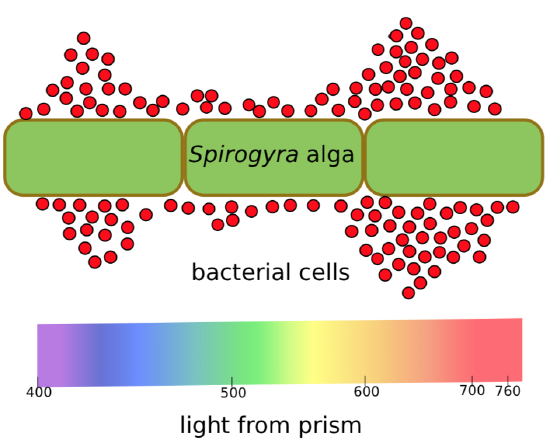4.1.4: Discovery of Photosynthesis
- Page ID
- 27742
Learning Objective
Summarize the experimental results that revealed details about the process of photosynthesis.
The history of the studies done on photosynthesis dates back into the 17th century with Jan Baptist van Helmont. He rejected the ancient idea that plants take most of their biomass from the soil. For the proof, he performed an experiment using a willow tree. He started with a willow tree with a mass of 2.27 kg. Over 5 years, it grew to 67.7 kg. However, the mass of the soil only decreased by 57 grams. Van Helmont came to the conclusion that plants must obtain most of their mass from water. He did not know about gases.
Joseph Priestley ran a series of experiments in 1772 (Figure \(\PageIndex{1}\)). He tested a mouse, a candle, and a sprig of mint under hermetically sealed (no air can go in or out) jar. He first observed that a mouse and a candle behave very similarly when covered, in that they both “spend” the air. However, when a plant is placed with either the candle or mouse, the plant “revives” the air for both.

Further ideas were brought about in the late 1700’s. Jan Ingenhousz and Jean Senebier found that the air is only reviving in the day time and that CO\(_2\) is assembled by plants. Antoin-Laurent Lavoiser found that “revived air” is a separate gas, oxygen.
But what is the oxygen “maker”? There are many pigments in plants, and all accept and reflect some parts of rainbow. To identify the culprit, Thomas Engelmann ran an experiment (Figure \(\PageIndex{2}\)) using a crystal prism that shine different wavelengths (colors) of visible light on the algae Spirogyra algae. He then measured oxygen production with aerotactic bacteria, which move towards areas of high oxygen concentration. A high density of bacteria cells accumulated in the blue and red parts of the spectrum, indicating this was where the most oxygen was produced and the most photosynthesis was conducted. This was a huge find. It tells that the key photosynthetic pigment should accept blue and red rays, and thus reflect green rays. The photosynthetic pigment chlorophyll a best fits this description.

Another important fact was discovered by Frederick Blackman in 1905. He found that if light intensity is low, the increase of temperature actually has very little effect on the rate of photosynthesis. However, the reverse is not exactly true, and light is able to intensify photosynthesis even when it is cold.
This could not happen if light and temperature are absolutely independent factors. If temperature and light are components of the chain, light was first (“ignition”) and temperature was second. This ultimately shows that photosynthesis has two stages (now called the light-dependent and light-independent stages). The light-dependent stage relates the to intensity of the light. The light-independent stage relates more with the temperature as it involves many enzymes.
Attribution
Curated and authored by Melissa Ha using 8.1 Overview of Photosynthesis from Biology 2e by OpenStax (licensed CC-BY). Access for free at openstax.org.


